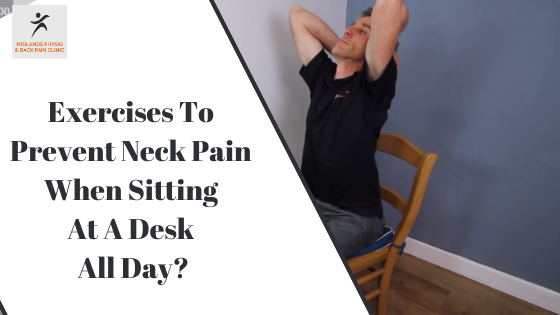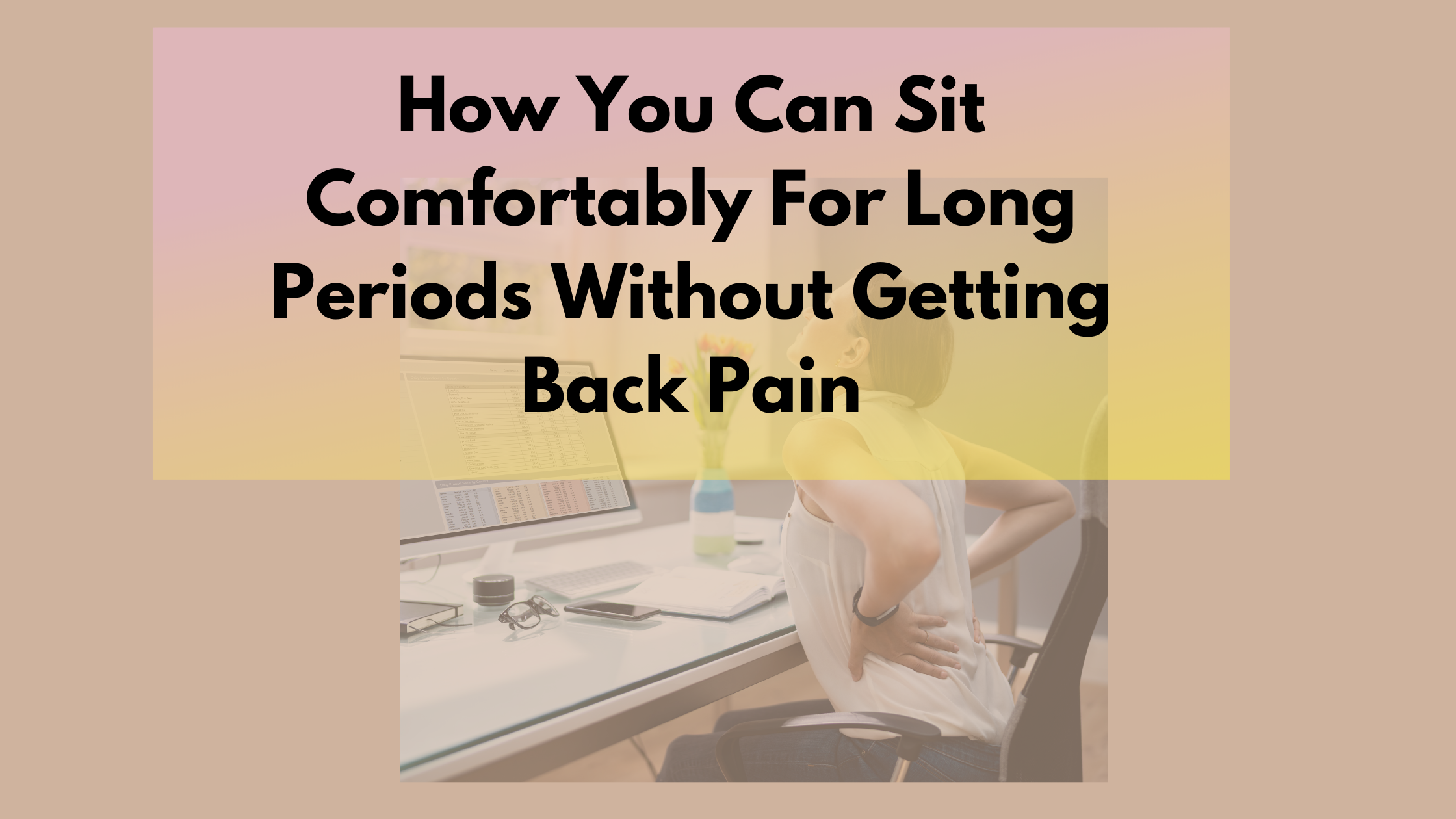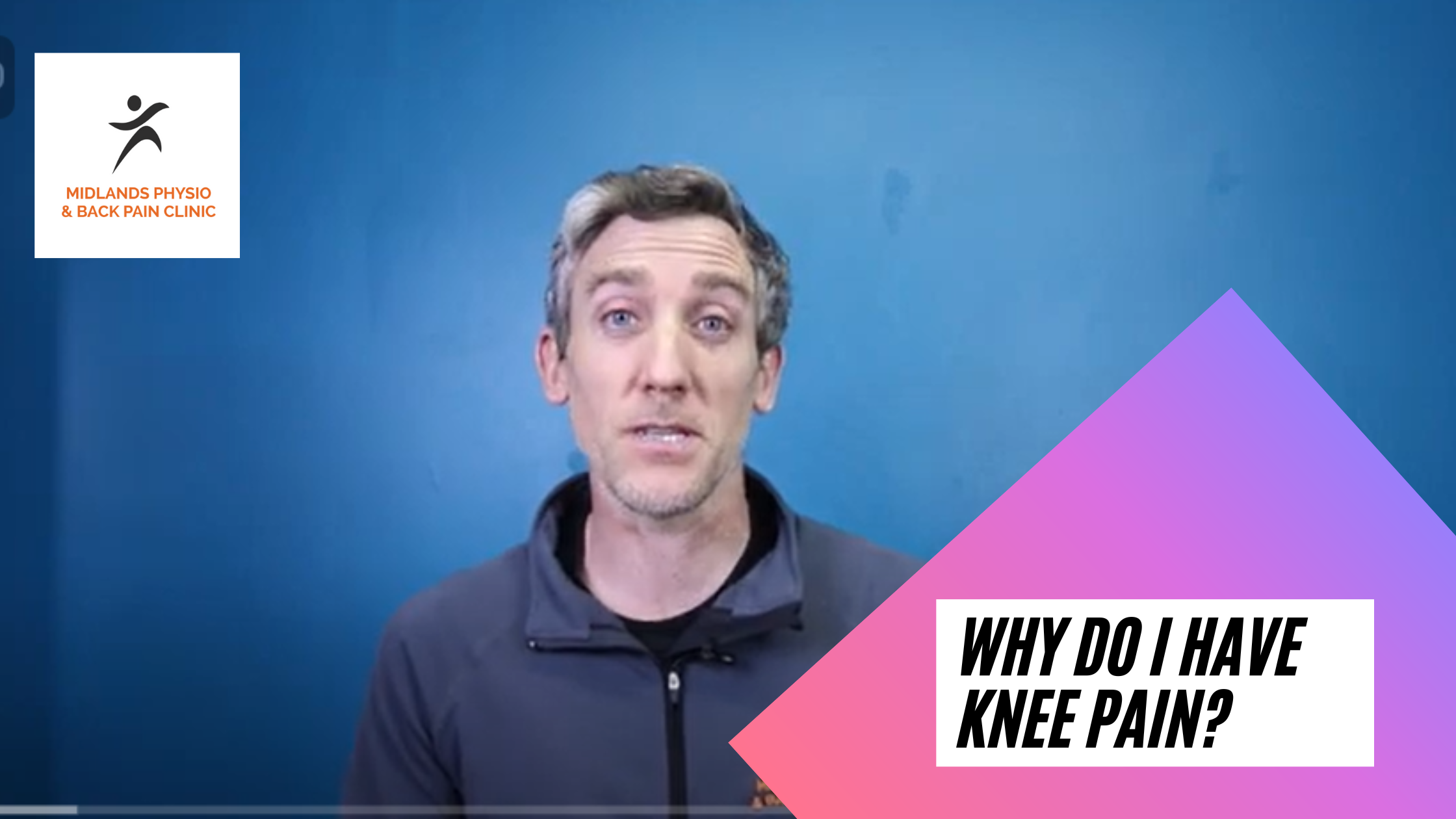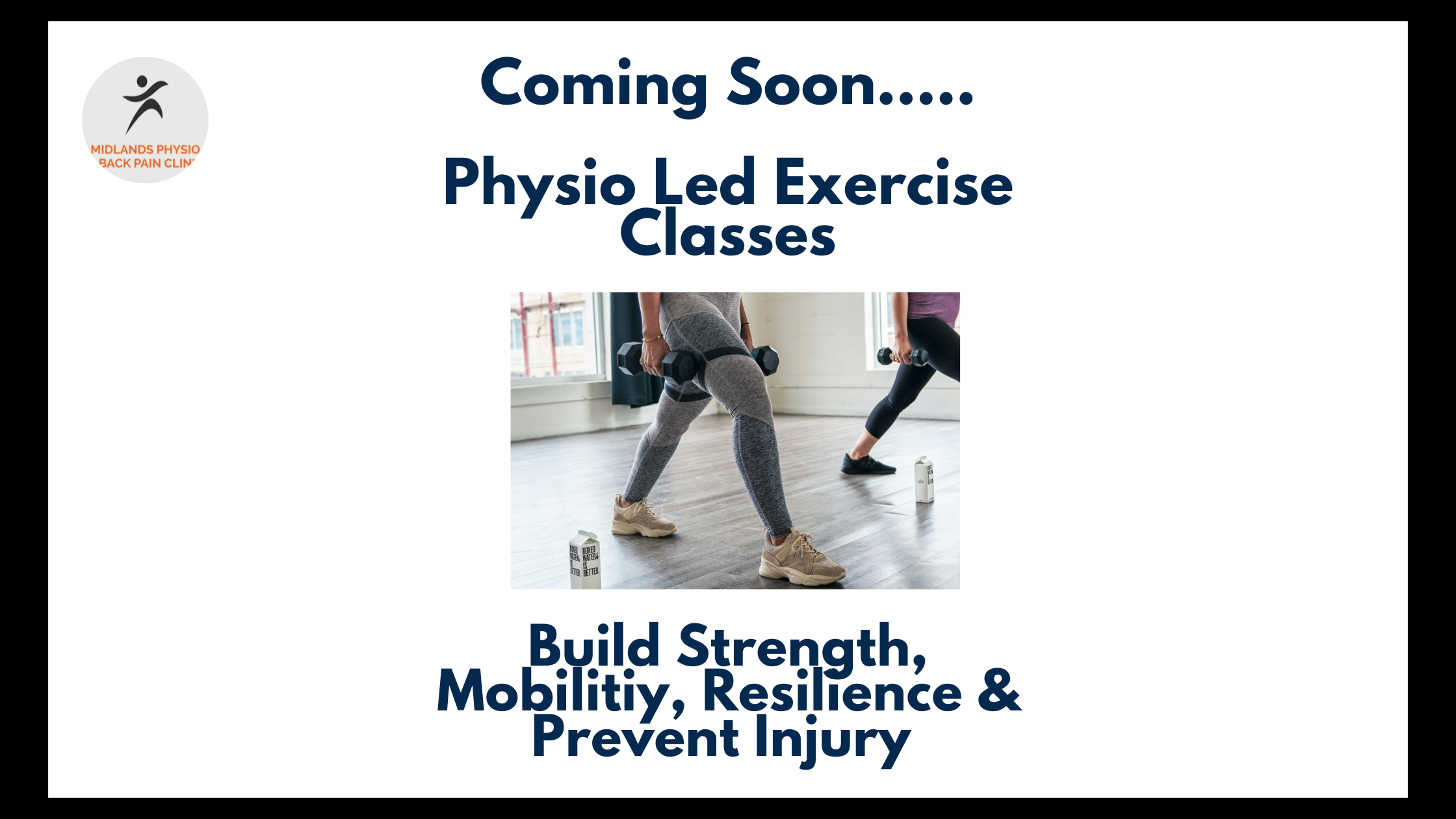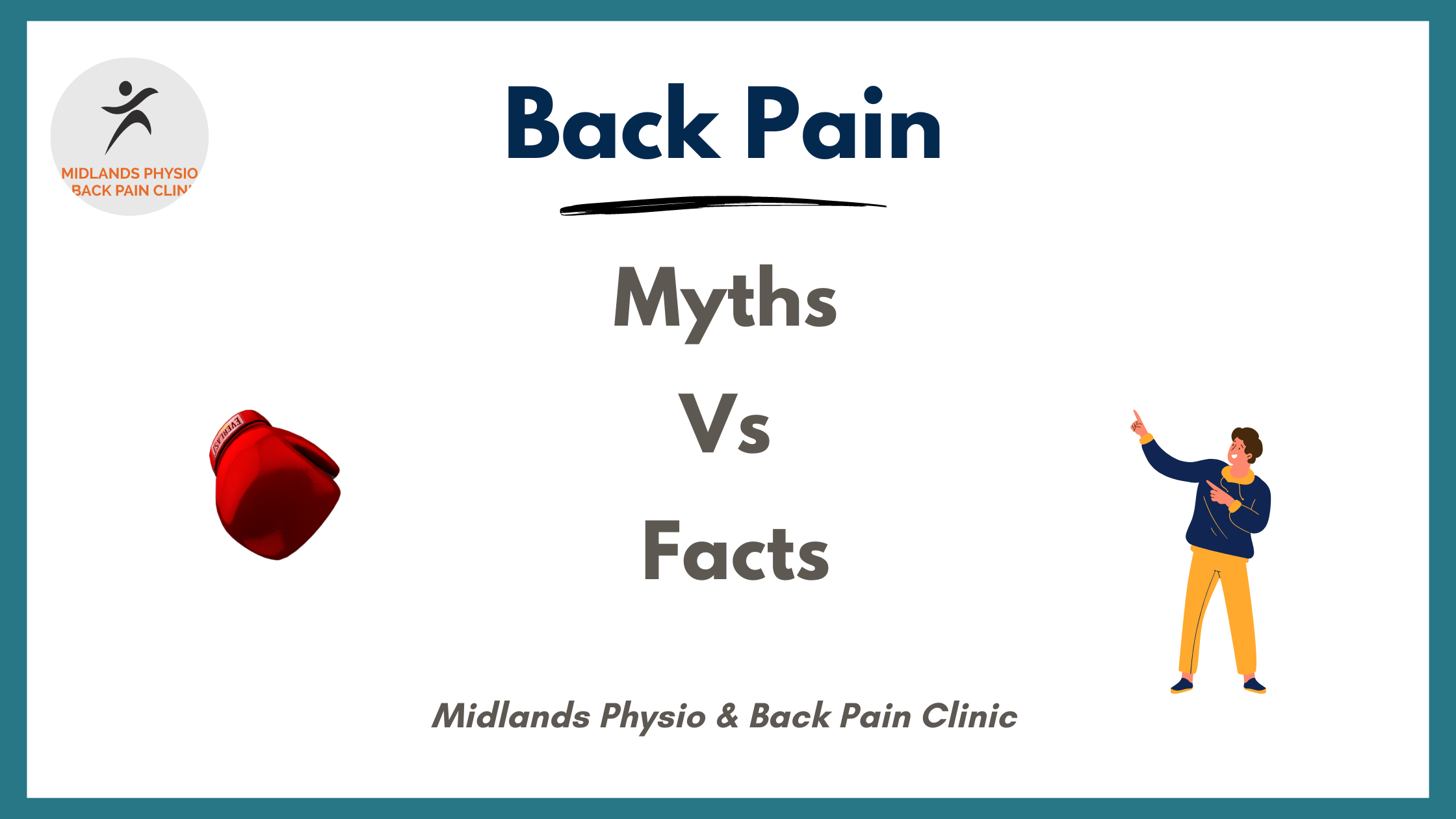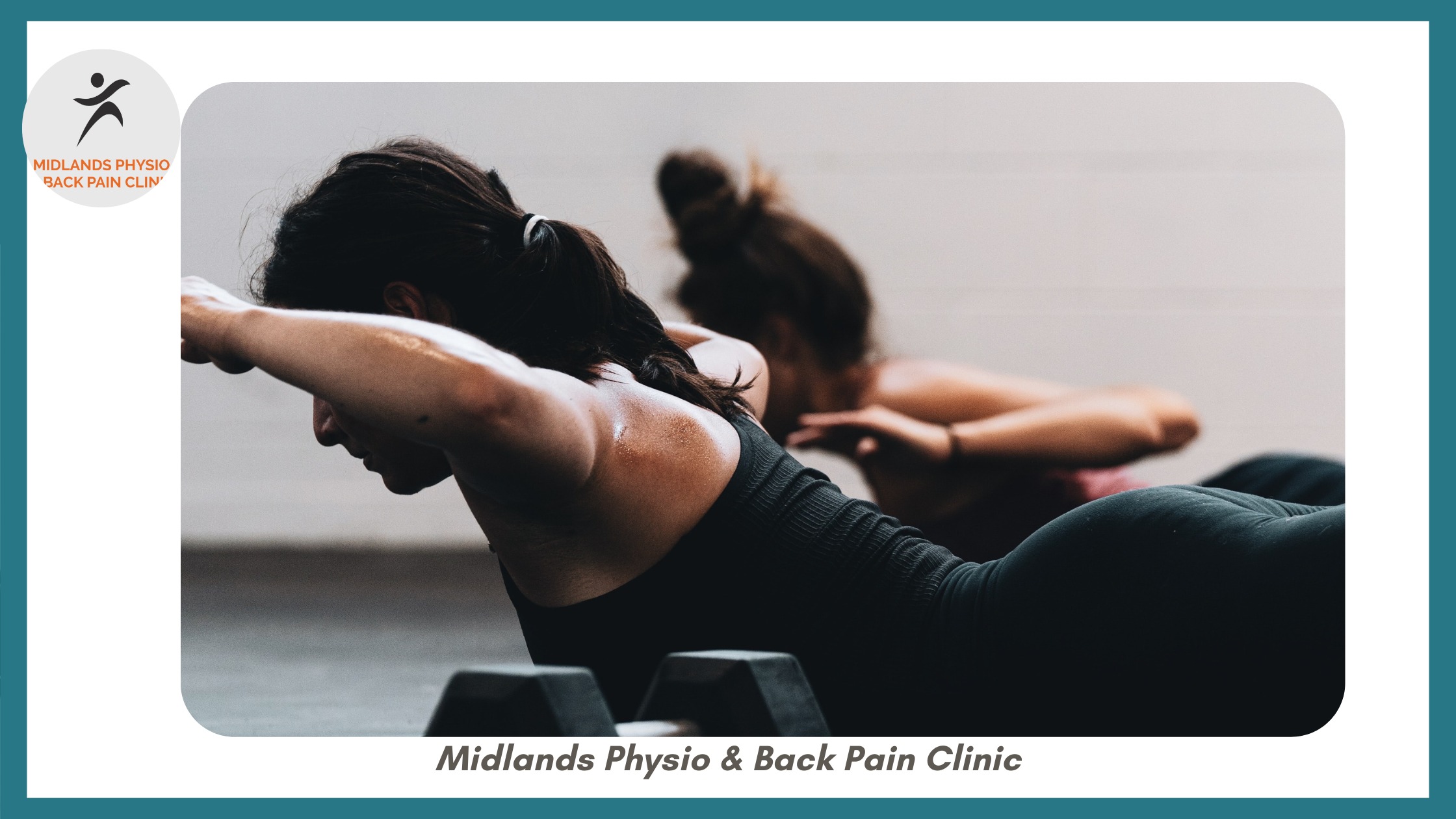Exercises To Prevent Neck Pain When Sitting At A Desk All Day
This month is neck and shoulder pain awareness month at Midlands Physio & Back Pain Clinic and over the course of the month I am looking at some practical ways to help you sit at a computer, work from home and not end up with a stiff, sore and achy neck.
In part one, I looked at some strategies that you can implement straight away to help prevent neck and shoulder pain. In today’s post I am going to be looking at some specific movements that you can do at home to help prevent pain stiffness.
I’m not a great fan of sharing exercises without knowing some information about ones complaint, what they are struggling to do, their previous injuries and movement imbalances, and usually, I don’t do it. But I have shared some exercises in todays post as they are quite general and should be beneficial for the most people. However, if they are uncomfortable to do or cause pain, please do not continue to do them.
“Why do muscles get tight and achy?”
A question I often get asked by patients in the clinic is ‘why are my muscles so tight and sore?’
As with a lot of things with the human body, there is ‘no size fits all answer’ and it can depend on a number of things from the persons story, previous injuries and lifestyle factors. This is the value of an individual assessment as it allows to us to really understand your story and what you need to do to get back to moving with confidence and with pain free movement.
However, in general a muscle will ‘tighten’ and become sensitive and sore when it is being overworked, is not moving enough or it is too weak.
With the case of neck and shoulder related pain from sitting and working from home, it is often due to a combination of a repetitive posture and lack of movement resulting in muscle imbalances . Too much time in the same position will lead to a build up of waste products in muscles that don’t get an opportunity to get ‘flushed out’.
A group of muscles that can often have a part to play in neck pain are the sub occipital muscles, at the base of your skull.

